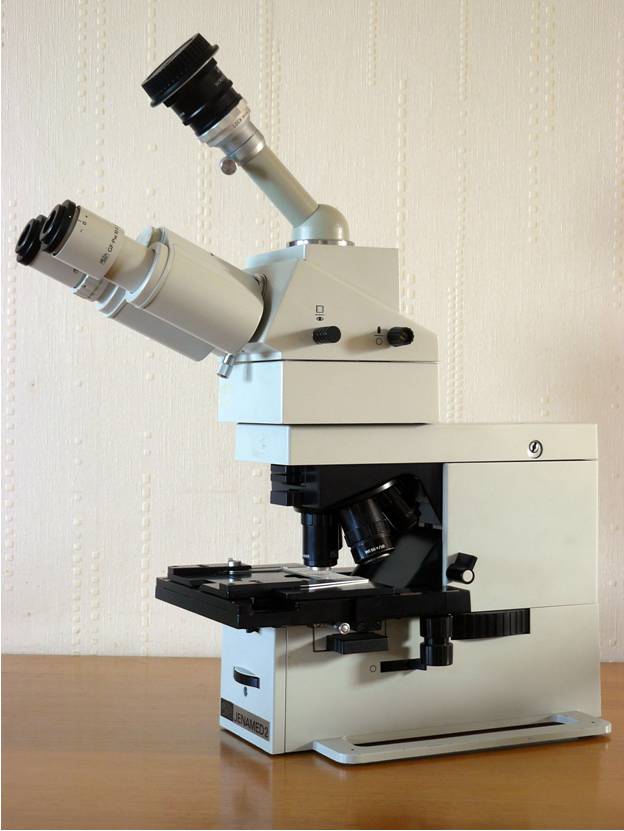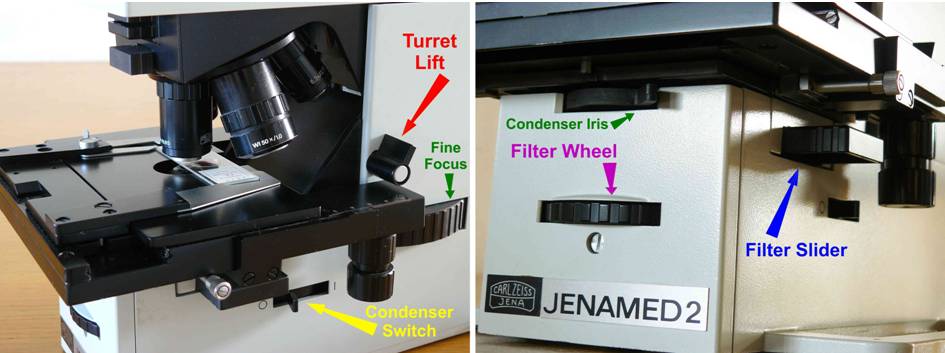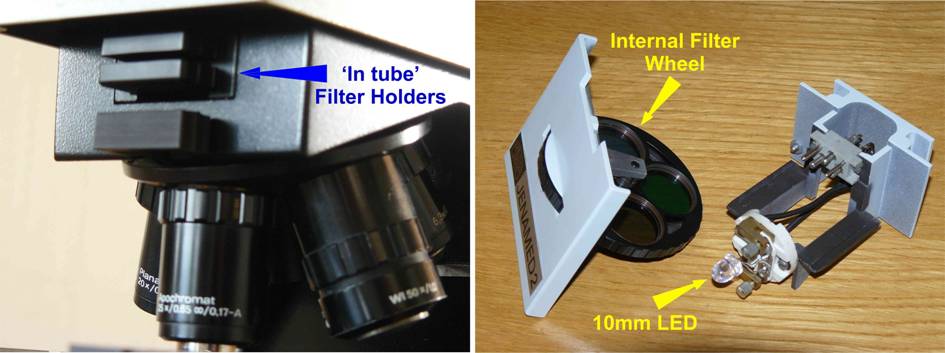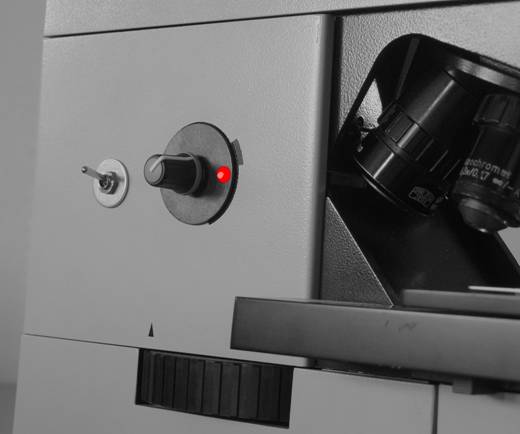
|
The Zeiss Jena ‘Jenamed’ Microscope by Raymond Sloss, UK |
Click
here for downloadable pdf version.
The Jena series of microscopes produced in the eighties aroused a lot of interest in the scientific community. They were among the first to break the mould of traditional microscope design. Their clean, sharp lines and modular construction helped to pave the way for the modern style of instrument.

The Jenamed first appeared as a routine lab microscope. Like other Jena models of the time it was available in configurations to suit most disciplines. The basic model itself was liberally supplied with slots and facilities providing great versatility.
The Jenamed is an infinity corrected microscope, it was usually supplied with 30mm GF ( Großes Feld) eyepieces and the famous 25mm thread objectives. Mine was fitted with five brand new GF Planachro objectives, these give outstanding widefield images. The trinocular head is normally supplied with a vertical camera tube. I remove this and mount my Canon 450D on an inclined Biolam/Lomo monocular head. This gives the camera a perfect angle for setup and focussing. The head itself has a 100% switchable light path and a focussing Bertrand lens, far better than those horrible ‘flip in’ Bertrands that don’t focus, it also makes condenser iris setting so easy. You can also search Zeiss West objective elements for the inevitable delamination!

Among the interesting features of the Jenamed are the lack of a coarse focus control and the horizontal fine focus wheel. This wheel passes through the entire body of the microscope and is operable from both sides. A lever is provided to instantly lift the objective turret to give clearance for insertion of a new slide or oiling an objective. This suggests that the microscope was designed for repetitive slide viewing with only a touch on fine focus for each new slide. This is reinforced by the fact that the condenser has no focus control but merely has a flip in high power and low power objective position.

My Jenamed is actually the Jenamed II. I bought it from ebay with the usual assurances of regular service etc. On picking it up I found the internal transformer was burnt out. This didn’t worry me unduly as I tend to convert most microscopes to LED illumination. One advantage of the burnt out transformer was that the microscope appeared completely unused!
My microscope shown above has the hand rests missing.
The original illumination was by 30 Watt Halogen. Changing the bulb was very easy, the complete bulb assembly pulling directly out of the back of the main body, this action also disconnecting the supply circuit. The bulbs themselves were fairly complex having been soldered to a custom bracket. Easy to change but very expensive, making the decision to change to a 15 pence, virtually everlasting LED system easy! I removed all the original electronics and transformer and installed a small copper etched circuit. This allowed a single transistor to power a 10mm 100,000 mcd high intensity LED at around 20 mA. A single turn of the control knob on the variable resistor allowing a smooth transition from off to full power. A red 5mm LED is also connected in parallel to indicate when the circuit is live.
These small but powerful high intensity LED’s when placed at the same position as the original bulb filament provide enough illumination for brightfield and phase work , including immersion. All the components fitted easily inside the microscope body. Only the small switch, variable resistor control knob and live warning light are external. The power is supplied by three AA batteries (giving max 4.5 volts) in a 25 pence battery box from Rapid Electronics (contact glued inside the main body of the Jenamed). Even using re-chargeable batteries this system lasts for many hours.

The Jenamed is a first quality microscope, a pleasure to use, although most people, like me would prefer a traditional fine focus knob rather than the horizontal wheel system. I am very lucky in that over the years I have picked up a fine collection of top objectives of all types for both the Jenamed and my Jenalumar. It is surprising how liberating a mains and transformer free microscope is, not light, but easy enough to carry around. Not plagued by the unwritten law of tangled cables. No wonder I sold my PM III !
Comments to the author, Raymond Sloss are welcomed.
Published in the March 2009 edition of Micscape Magazine.
Please report any Web problems or offer general comments to the Micscape Editor.
Micscape is the on-line monthly magazine of
the Microscopy UK web
site at Microscopy-UK.